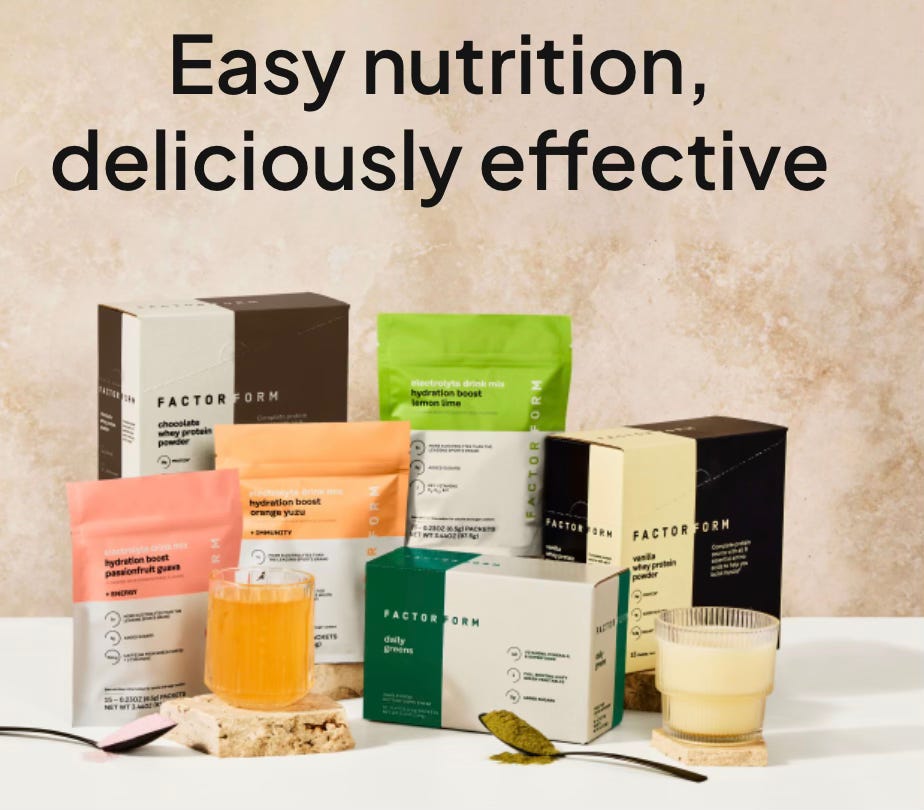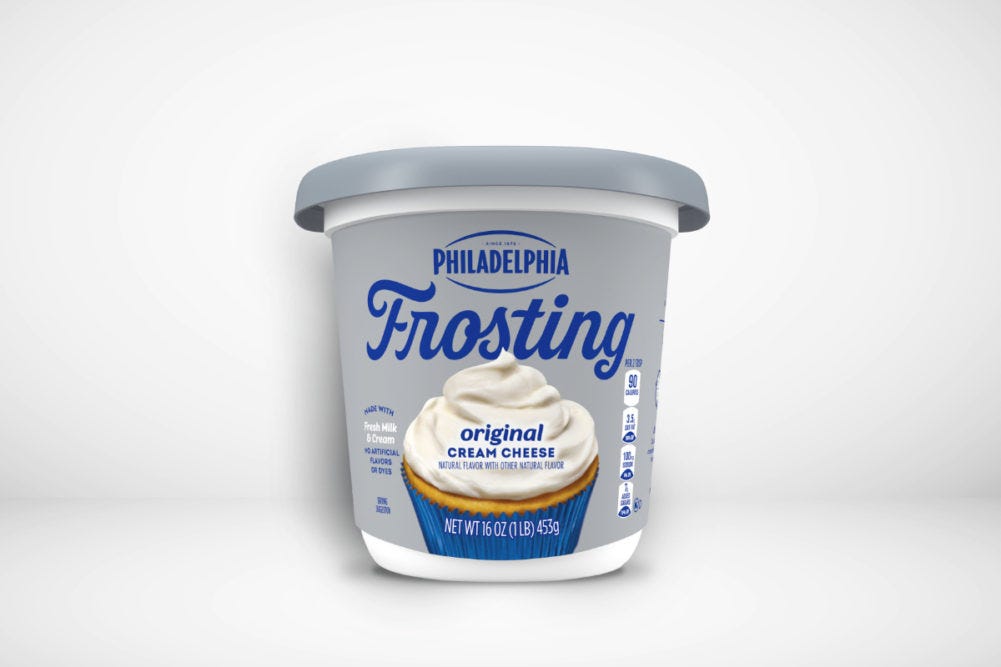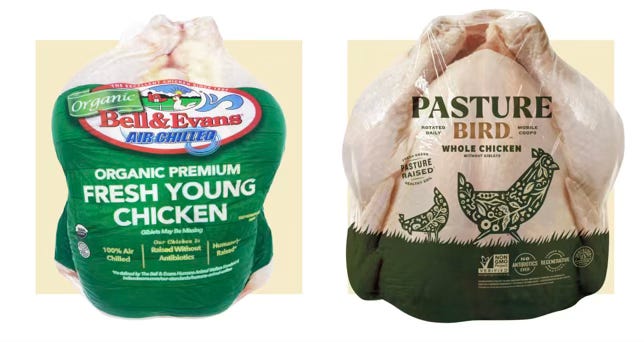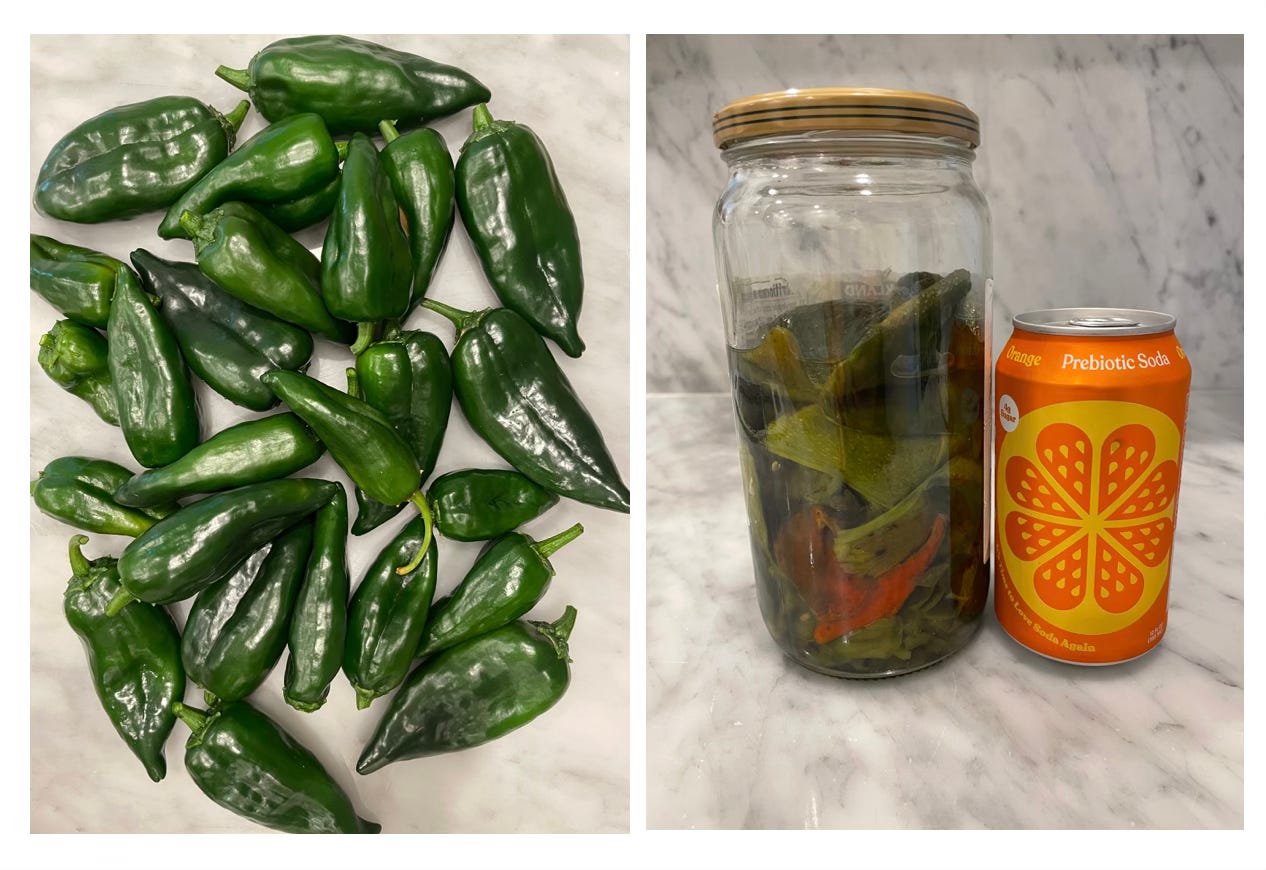Meal delivery co Factor is getting into supplements. This is so smart because Factor is already known as a nutrition-led food company. They must know most of their customers also take supplements. Success in a whole new category relies on:
credibility in that category
leveraging a behavior you know already exists with your current audience
differentiation in that category — in this case single-serve for on-the-go
low friction — subscribership makes for an easy cross-sell
Another innovation softball
FDA issuing guidance to reduce salt
I’ve been supporting a cancer center with free snacks and when I presented LMNT salt sticks to the head oncologist he did not flinch. Dehydration is a challenge, and the NIH did a study.
Salt is an important electrolyte for everyone. However, the FDA is issuing guidance to reduce salt. Salt has been maligned for years but recent studies show risks are when people take > 5g a day (that’s a lot). Comments on the FDA’s draft guidance may be submitted electronically by Nov. 14
Have we reached post- third party certifications in food?
I find it interesting that some of the top rated poultry brands for animal welfare do not carry third-party certifications — as highlighted in last weekend’s WSJ
Brands like Bell & Evans and Pasturebird say they prefer to set their own higher standards rather than relying on external certifications such as Global Animal Partnership or Certified Humane. You have to go to their websites to know how birds are raised and processed.
Could it be brands are starting to think direct transparency and customer relationships are more valuable than certifications?
What you can expect from surveying your consumers
It’s survey season! More than one of these have landed in my inbox this week:
You can, and should, use your own consumer list when seeking certain kinds of feedback. But remember, a survey may not be the right method to get the info you seek. It might be interviews with a few select respondents to understand what even are the questions to ask.
Things you might want to know:
When considering a brand refresh or rebrand
Understanding if your product is meeting expectations
Interest in new flavors or packaging
Brand stretch (limitations or opportunities) into new categories
With surveys, mostly what you are looking for is guidance or warnings. For example, when presenting a potential new brand name, all you are really looking for is whether or not it alienates or confuses your existing audience.
The reason why results should be taken only as guidance is that each research objective will have different response bias when coming from your audience list.
Moreover, when asking about new products you should expect some over-inflated level of interest. This is natural because these folks already know you, love you, and will be happy to see more of you. Use this questioning as more of a ranking exercise to understand line extension prioritization.
These surveys should be fun and easy and not too demanding (read: long) on your fans. You can’t ask for too much within a survey!
Rex tore out the garden and these were the last of the peppers. Which I thought was a lot until I roasted them (soda can for scale).
All my best,
Jennifer









